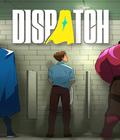It's been six months since Microsoft debuted Ori and the Blind Forest at E3 2014. Chris took a look at the first level back then, and what he said in his preview still holds true. Ori and the Blind Forest is a strikingly visual game that is just as intriguing to see as it is to play. The graphics are lush, looking almost painted, with the focus on the overall landscape rather than the diminutive title character. This kind of reverse focus is unusual in 2-D adventure games, where player characters are typically large and designed to be front and center.
For Ori and the Blind Forest, the reversal works well since it's not just a stylistic choice, but a story-based one. As Ori, you're alone in the forest, with no one to guide you and no one to protect you. The forest is a big, dangerous place, and Ori's small size quickly reinforces that fact. The first demo level, the Sunken Glades, is predictably gentle, serving double duty as a tutorial that introduces you to Ori's basic moves. It also introduces Sein, who is Ori's sidekick and his main offensive ability.
Looking like a small ball of fog, Sein quickly becomes indispensable. Without Sein at your side, the adventure would be over before you know it.
Playing through the Sunken Glades was a nice introduction to the world of Ori, but in all honesty, it showed off the artwork more than the gameplay. What was here in the first level was along the lines of a standard platformer and didn't really push the limits. For that, I had to skip ahead to the Ginso Tree level.
Located approximately three hours into Ori and the Blind Forest, the Ginso Tree level kicks things up a few notches, both in character ability and in difficulty level. Set inside a large tree, this level relies on the player mastering a slingshot move. To pull this off, you must get very close to an enemy or a projectile and then use it to fling yourself in any direction. You move one way, and the projectile moves in another. It's easier said than done because timing has to be precise. One moment too early, and you'll miss the grab, resulting in a hit. One moment too late, and again, you're getting hit.
One nifty aspect is the fact that you don't always have to use the slingshot for movement. You can fire yourself into a wall to "aim" the enemy projectile that you've just captured. It always moves exactly opposite you, so good timing can result in some creative shots.
Speaking of timing, the latter half of this level is a speed runner's dream. Once the mid-point has been cleared, the tree starts to fill with water, and it doesn't leave any room for mistakes. At least in the preview build, the water is always nipping at your heels. If you manage to get ahead of it, it speeds up to compensate. Miss a jump, and you're toast. Precision movement is the order of the day here. Get it right, and the whole sequence looks incredibly fluid. More often than not, you're likely to get it wrong. In that regard, Ori and the Blind Forest reminds me a lot of old-school NES games. There were always sequences that were challenging and unforgiving but offered a good sense of accomplishment once you beat them. That's true here.
The final demo level that I got to check out was called the Forlorn Ruins. Set near the end of the game, this level plays with gravity. As you adventure through the level, Ori has to carry a magic ball to pass over dangerous areas. This ball keeps him grounded to whatever direction he is facing. As long as you don't jump off a ledge, Ori's feet stay planted firmly on the ground — even if that ground is upside-down.
To explain it a bit better, imagine a square block floating in mid-air. Ori can walk completely around the edge without falling off. If you jump, gravity is relative to Ori. For example, if you are standing on the left hand side of the block and jump off, Ori will fall to the right. To progress through the Forlorn Ruins, you'll have to do a lot of relativistic moving.
Much like the Ginso Tree level, precise movement is key here, though the Forlorn Ruins do rely on blind jumps for some of the challenge. Yes, Ori effectively gives you an unlimited number of lives, but the blind jumps still felt a bit cheap at times. It's one thing to get caught by a trap because you made a mistake, but it's another to get caught because you didn't have any idea of what was coming.
What stood out across all three demo levels was how distinct each one looked. Each level (or even part of a level) uses its own color palette. This helps each area stand out and provides a visual cue that you've moved past an important point in a level. For example, the first half of the Ginso Tree level is mostly reds and browns, while the latter half is primarily blues and greens.
All in all, Ori and the Blind Forest provides absolutely beautiful visuals. To say it looks like a watercolor painting in motion is more reality than hyperbole. Where it stands to falter, though, is in its inherent difficulty. There is nothing wrong with a challenging game, but catering only to the hardcore crowd is a mistake, especially with a title that looks as good as Ori does.
Having a game that is balanced to the point of requiring absolute precision in movement and pixel-perfect jumps leaves out the casual crowd. If the development team can squeeze in an easy mode that offers more forgiving jumps and some more health for Ori, then Ori and the Blind Forest will find its niche with both casual and hardcore players.
More articles about Ori and the Blind Forest











 A puzzle platformer that combines deep gameplay with emotional storytelling, Ori and the Blind Forest delivers a stunningly beautiful visual aesthetic that will warm even the coldest hearts.
A puzzle platformer that combines deep gameplay with emotional storytelling, Ori and the Blind Forest delivers a stunningly beautiful visual aesthetic that will warm even the coldest hearts.
































